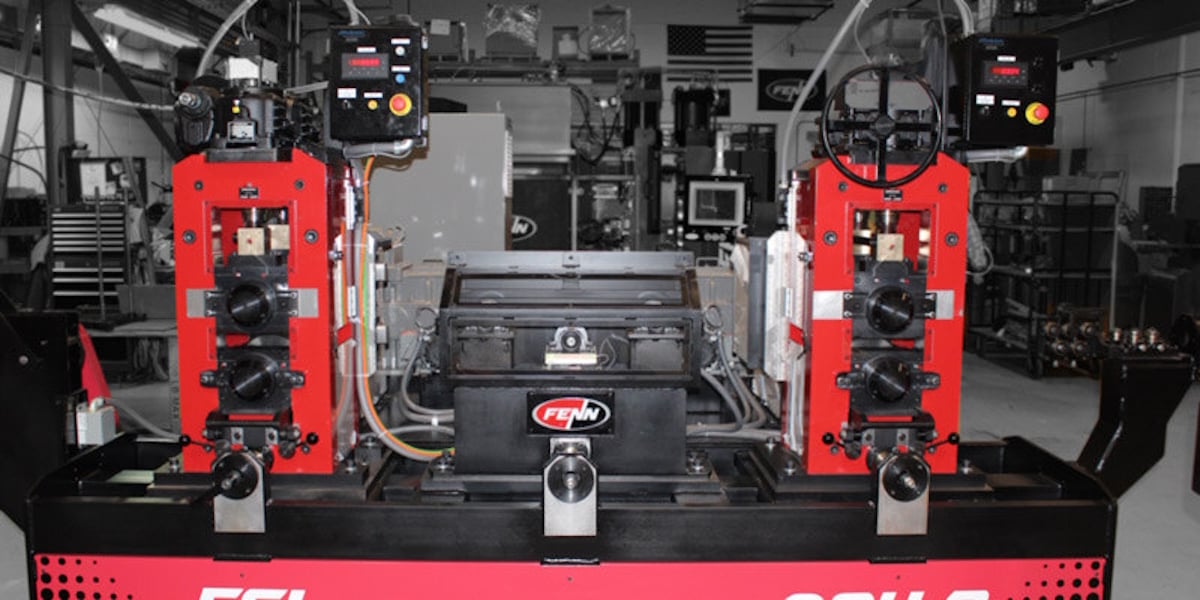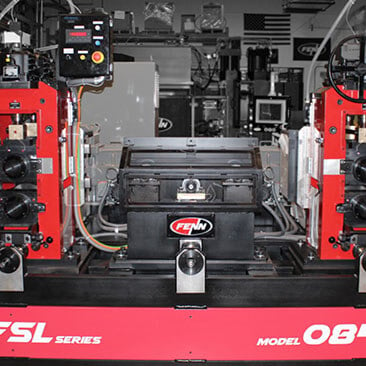What Is a Wire Flattening Mill? Exploring Wire Mill Functionality and Operation
Whether crafting the intricate wiring of an aircraft or the circuitry of tomorrow’s technology, wire plays a vital yet often overlooked role. To shape wire for its diverse applications requires specialized machinery – enter the wire flattening mill. A wire flattening mill, also known as a wire flattening machine, is a specialized piece of equipment designed for shaping and processing metal wires into different cross-sectional shapes and thicknesses. This process, commonly called wire flattening, is essential in various industries such as aerospace, automotive, and electronics, where metal wires are utilized in diverse applications.
Let’s explore how wire flattening mills perform their function and uncover the various types available to meet different needs.
What Is a Wire Flattening Mill
A wire flattening mill is a specialized machine used in various industries to reshape and reduce the diameter of metal wires without compromising the material. This process is commonly used to produce electrical wiring, cables, jewelry, and other applications needing specific wire dimensions. Wire flattening machines are designed to work with different metal materials such as copper, steel, aluminum, and more.
One of the key benefits of a wire flattening mill is the ability to produce wires with a consistent cross-sectional profile and accurate dimensions. This is achieved through precise control of the roller pressure, which can be adjusted to suit the properties of the material being processed. Modern wire flattening machines also have advanced monitoring and control systems to ensure optimal performance and prevent material damage.
The versatility of wire flattening mills allows for a wide range of applications, including:
- Producing flat or shaped wires
- Processing various metal materials
- Manufacturing high-precision components
It is important to note that wire flattening mills are available in multiple sizes and capacities. These machines can operate continuously, making them suitable for large-scale production environments. In addition, wire flattening and shaping lines can be customized to handle specific wire diameters and desired output shapes.
Wire flattening mills are vital tools in the manufacturing and metalworking industries, providing efficient and precise reshaping of metal wires to meet specific application requirements. With advanced control systems and flexible design options, these machines have become essential in producing countless products that rely on exact wire dimensions.
How Wire Mills Work
A wire flattening mill is a specialized machine that transforms round wires into flat, rectangular, or shaped cross-sections. These machines are crucial in various industries, such as aerospace, automotive, and electronics manufacturing.
The wire flattening process begins with a round or pre-shaped wire being fed into the mill. The wire is then passed between a set of heavy-duty cylindrical rollers that apply pressure to alter the cross-sectional shape of the material. The number of rollers and the configuration of the mill can vary depending on the desired end product. The rollers typically have grooves or other patterns that assist in the reshaping process.
Wire flattening mills can be classified into two main types: single stand mills and tandem mills. Single stand mills consist of one pair of rollers, while tandem mills comprise several roller sets arranged in a row. Tandem mills offer higher efficiency and better quality control as the wire passes through multiple roller sets; this ensures consistent and precise flattening.
Some important factors influencing the output quality of a wire flattening mill include:
- Roller material: The durability and precision of the flattening process depend on the quality of the rollers. High-quality tungsten carbide rollers feature excellent wear resistance and ensure a longer service life for the mill.
- Wire tension control: Inconsistent tension during the wire flattening process can lead to shape variations or surface defects. A proper tension control system is essential for achieving uniform and smooth output quality.
- Lubrication: Adequate lubrication between the rollers and wire is crucial to minimize friction and prevent surface damage. Efficient lubrication systems ensure smooth operation and prolong the life of the rollers.
Wire flattening mills play an essential role in manufacturing by transforming round wires into various cross-section shapes for diverse applications. Single stand and tandem mills offer distinct advantages and cater to different processing needs. Careful consideration of factors such as roller material, tension control, and lubrication ensures the optimal performance of these machines.
Advantages of Wire Mills
Wire mills, such as wire flattening mills, Turks heads, and swagers, provide various advantages for industries that rely on ferrous and non-ferrous wire production. This section will cover a few significant benefits that these mills offer.
- Precise Shaping & Forming: Wire mills allow for the precise shaping and forming of wires, which is crucial for agriculture, medical devices, and military applications. Forming machines and payoffs/dereelers in wire mills ensure that the manufactured wires maintain uniform dimensions and meet exact specifications.
- Produce Specialized Products: The advanced technology employed by wire mills makes it possible to produce specialized products, such as wedge-shaped wires and superconducting materials. These cutting-edge wires are essential in innovative industries and allow manufacturers to stay competitive.
- Efficient & Cost-Effective: The streamlined production process minimizes waste and reduces labor costs. The efficient use of materials translates into less downtime and faster delivery of products to customers.
- Flexible Customization: Manufacturers can choose from various rebuilds, retrofits, and upgrades to meet their specific needs. This adaptability ensures that wire mills remain relevant and easily adjustable to meet evolving industrial requirements.
Explore Wire Shaping Solutions From FENN
Through this analysis of wire flattening mills, we’ve uncovered how these specialized machines sculpt metal wires into their precise forms. Wire mills play an integral role across industries as diverse as aerospace, electronics, and more by leveraging calibrated rollers and computerized controls.
For over 75 years, FENN has created advanced wire forming solutions to shape the technologies of tomorrow. The customized equipment delivers high-quality, high-production results across various materials, from individual mills to fully automated lines.
Whether you need to explore new wire profiles, increase throughput, or improve existing operations, our team of experts at FENN can develop the optimal solution. To learn more about our wire shaping expertise and how engineered equipment can transform your processes, give us a call. Through innovation and application-focused design, we’re pushing the boundaries of what’s possible in wire forming.




